
Reflections From Rutgers Faculty for Hispanic/Latinx Heritage Month
Adobo, Sazón and Sofrito: We Are Here
Salvador Bienvenido Mena
Vice Chancellor for Student Affairs
Rutgers University-New Brunswick
The term “the Browning of America,” as described by notable demographer William Frey, captures the rapid demographic shifts in the United States. Estimates indicate that before 2050 we will be a majority-minority country. This rapid change in the racial and ethnic makeup of the country has been fueled in part by immigration and birth rates in the population of people who identify as Latina/o/x, Hispanic and/or by country of origin (e.g., Salvadorian, Dominican, etc.). This unquestionable truth is at the root of the fear that many have today about the “flavor” of the country changing from wholesome apple pie and plain salt and pepper to churros and flan and everyday Latinx seasoning products Adobo, Sazón and Sofrito.
The Latinx population in this country reflects generations of families whose origins predate the founding of these United States to those families who just arrived a minute ago from their country of birth, seeking a better life in this land of ours. Between those whose familial background dates to when California and Colorado were part of Mexico and those who just arrived, Latinx communities have flourished in different parts of the country for years. For example, in New York City and Los Angeles, people of Puerto Rican and Mexican descent have profoundly influenced the cultures of those two cities, respectively. In other parts of the country, there are emerging Latinx communities in places like North Dakota and Louisiana, where opportunities for work and new beginnings attract those just arriving and those looking to other parts of the country for better prosperity.
So is the story of my family, who came to the United States for a better future. While life hasn’t always been easy for them in this country, I would not be where I am today if it weren’t for their sacrifices and belief that I would have better opportunities here. This story is a common one and will continue to be written as the Latinx population grows in size, diversity and political complexity. Latinx History Month allows us to reflect on the meaningful contributions made by a diaspora of people who embody different mixes of African, Asiatic, European and Indigenous blood and every intersectional identity imaginable.
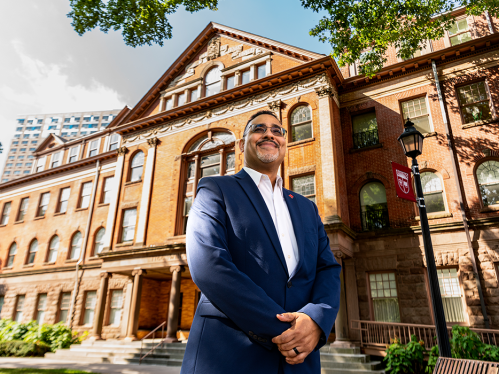
How Latinx Activism Changed the Landscape of America
Lorrin Thomas
Associate Professor of History
Camden College of Arts and Sciences
Rutgers University-Camden
1968 was a year of upheaval and protest in the United States and around the world. It was also the year that, for the first time, Latinx activists in the country managed to gain broad recognition of some of the key issues that they and their predecessors – labor leaders, teachers, civil rights advocates – had been working for years to change. Until that point, the discrimination and racism faced by many Mexican Americans and Puerto Ricans – the largest Latinx groups in the United States – had remained invisible to most other Americans. In fact, many journalists and policymakers in the mid-1960s referred to members of Latinx groups as the “invisible minority.” Soon, however, two massive waves of protest forced the mainstream media and many other Americans to acknowledge the work being done by activists in Latinx communities.
The first wave came from the United Farm Workers, a union founded by Mexican American leaders in the early 1960s. After organizing strikes across the West over several years, the UFW gained substantial visibility in 1968 when, not long before their respective assassinations, both Reverend Martin Luther King, Jr. and Senator Robert Kennedy announced solidarity with the UFW and publicly expressed admiration for its leaders’ commitment to nonviolence. (A few years later, UFW co-founder Dolores Huerta was credited with initiating the rallying cry “si se puede” – “yes, we can” – that Barack Obama borrowed for his 2008 presidential campaign.)
Also in 1968, thousands of Latinx high school and college students began demonstrating in large cities around the country to demand bilingual programming, improvements to their decrepit schools, protection from discriminatory treatment by teachers and administrators, more access to higher education and the development of university-level Chicano and Puerto Rican Studies programs. The strikes, walkouts and sit-ins spread to many smaller cities and towns during the following year. In some places the farm workers’ and student movements intersected, as they did in Crystal City, Texas where more than half the student strikers were children of Mexican migrant workers. The students were skilled at communicating with the media, and soon a U.S. senator invited several strike leaders to meet with officials in Washington, D.C. A few months later, the Senate held a series of hearings to investigate violations of equal educational opportunity experienced by Mexican American and Puerto Rican students across the country. One witness at the hearings, describing the enormity of the student activists’ impact, concluded: “en masse, [they] walked out of their schools and challenged American society, the American education system, to an accounting.”
Having assembled their own movements using the tools and strategies developed by earlier activists and leaders, Latinx change-makers built organizations and set goals – to secure fair housing, voting rights and bilingual education, for example – that would guide and inspire generations that followed. And their work is still evolving. Fair housing advocacy now often involves sustainable urban development and civil rights campaigns that expand protections for the undocumented. Legacy Latinx organizations continue to lead the way.

Anitta and Latinx Culture [in Portuguese]
Daniel da Silva
Assistant Professor of Portuguese and Luso-Afro-Brazilian Cultures
School of Arts and Sciences
Rutgers University-New Brunswick
Brazilian pop star Anitta became the first solo woman performer from Brazil ever to win an MTV Music Award during the 2022 ceremony, beating Bad Bunny, Daddy Yankee and others for Best Latin entry with “Envolver,” a reggaetón track from her recent album, Versions of Me (Warner). A household name in Latin America, Anitta’s award marks a certain recognition by the American music industry of Brazilian contributions to Latinx popular music, but not without ambiguity.
“Envolver” first found a wide audience on TikTok, and features Anitta singing in Spanish, not in Brazilian Portuguese. Though “Versions of Me” was produced to win over English language consumers, it is a Spanish language reggaetón viral phenomenon that made a Brazilian performer the newly minted representative of Latinx culture within mainstream U.S. popular music scenes. In anticipation of her album release, The New York Times commented, “A solo female pop artist from Brazil has never become a star in North America,” suggesting that Anitta may be the first.
As a representative of a cultural latinidad often sold to North American consumers in nebulous forms, however, she treads a path laid by 1940s Brazilian performer and Hollywood star Carmen Miranda. Miranda “consistently represented notions of the exotic and otherness” that corresponded “fabulously to Hollywood studios’ Latin vogue.” Parodied and remembered for her fruity headdresses, her unintelligibility as a Brazilian Portuguese speaker was lampooned just as often. We may not be far removed from that punchline. On MTV’s official YouTube channel, you can watch Anitta perform “Envolver” live at the award ceremony, hear her ease singing in Spanish, while subtitles inform the viewer she is “[singing in Portuguese].” Eh, close enough?
Latinx popular culture is again in vogue, and a new Brazilian bombshell is the star of the moment. Rather than muddling the particularities of Brazil, we are better served by registering Brazilian distinctions as Latinx culture, like the funk repertoires that emerged from sprawling Brazilian favelas, where Anitta first began performing, and which continue to play a large part in her success. Anitta insisted as much during her performance, as “Envolver” faded into the Brazilian funk rhythm of her 2017 hit “Vai Malandra,” and she yelled out, “Did you think I wasn’t going to shake my ass tonight?” We can shake ours along with her in hopes that Brazil’s place within a rich Latinx topography does not get flattened out.
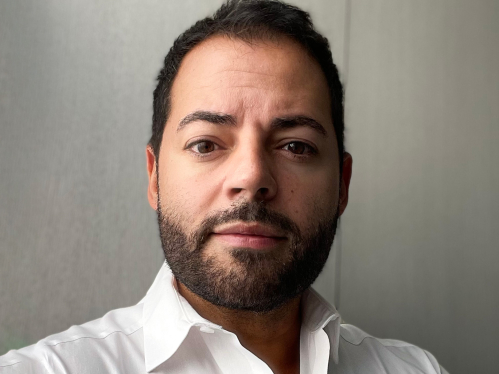
How Do We Measure the Unmeasurable?: Latinx Students in Higher Education
Nichole Margarita Garcia
Assistant Professor of Higher Education
Graduate School of Education
Rutgers University-New Brunswick
Latinx communities are the future of our nation’s economic competitiveness and workforce, yet they have the lowest education attainment level of any racial or ethnic group in the United States across secondary and post-secondary institutions. Recent global crises such as COVID-19, racial unrest in reaction to anti-Blackness, racist discourses, rescinded policies protecting undocumented communities and student debt have created unsafe and dangerous conditions for Latinx students in higher education. These disparities have only widened preexisting opportunity gaps in secondary and post-secondary education. Latinx Heritage Month is a time to acknowledge, reflect and take-action against inequities that perpetually exist for Latinx communities across the country, especially, in our educational systems.
We are in unprecedented times in higher education, where it is time to rethink and reimagine how we define and approach Latinx student success. Traditionally, Latinx student success has been measured by standardized assessments and outcomes such as GPA, which are partial measures. We must ask ourselves, “How do we measure the unmeasurable?” As we celebrate Latinx Heritage Month it is critical for institutions of higher education to be held accountable, acknowledge and center Latinx communities’ skills, abilities and knowledge they consistently bring with them into these spaces. It is equally important not to assume that all Latinx communities’ sources of support or challenges are the same. Latinx sub-ethnic and racial groups are distinct and should be embraced and not commodified to a “one-size fits all” approach.
To rethink and reimagine success, a commitment to serving Latinx degree-seeking students starts with a shift in language from labeling “at-risk” to “at-promise” or “minorities” to “historically marginalized.” When language shifts, Latinx students feel supported, connected and transform how they think of themselves. While educational attainment is significant, it is imperative that Latinx students sustain their home and community practices in educational spaces. When cultural is sustained, there is opportunity to develop Latinx students holistically by meeting them where they are.
Finally, society as a whole needs to unlearn all that they have been taught or come to believe about traditional measures of success to then reimagine a better future for Latinx students. For Latinx communities, a college degree is not just a piece of paper, it is a communal effort. It is a labor of love at the hands of our ancestors, kin and parents. It is a shared emotional moment of joy, which is beyond any institutional measure.
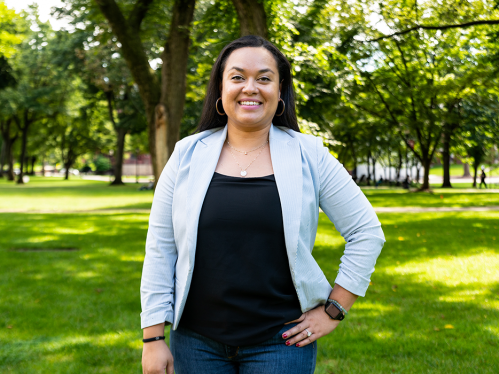




Latinx History Month allows us to reflect on the meaningful contributions made by a diaspora of people who embody different mixes of African, Asiatic, European and Indigenous blood and every intersectional identity imaginable.
Salvador Mena
Vice Chancellor for Student Affairs
Disability and Visibility in the Latinx Community
Javier Robles
Professor of Kinesiology and Health
School of Arts and Sciences
Rutgers University-New Brunswick
Hispanic Heritage Month is an opportunity to celebrate the culture and contributions of the Latino/a/x community. As a Puerto Rican, I am proud of the accomplishments made by our diverse and vibrant community. I acknowledge the great men and women like Roberto Clemente, Frida Kahlo, and Sonya Sotomayor. We are truly a multilayered and multicolored tapestry of people and stories.
However, to celebrate this month without recognizing the inconsistencies in our great nation as it relates to Black and brown people would be an oversight. Growing up in the housing projects of Newark, New Jersey, I understand poverty like many people in our country do. Having acquired a spinal cord injury at 16, I understand disability like many in our country do not. My experiences have shaped the way I teach, the way I advocate, and, more importantly, the way I see the world.
The Latino/a/x community continues to struggle with issues of oppression and segregation. The COVID-19 pandemic was instructional in how far we still must go to achieve the dreams and aspirations of those before us. In New Jersey, the Latinx population was the largest group to succumb to the pandemic, with young men overrepresented statistically. The social determinants of health continue to impact our community negatively as the chronic disease continues to burden black and brown people.
Segregation is pervasive in housing and the educational system, which is how many of our young students climb the economic ladder. Brown v. Board of Education officially ended segregation in schools in 1954. In 1946 a Mexican family fought and won a battle with the Westminster School District of Orange County, California to allow their daughter to go to a white-only school as opposed to the wooden shack where Mexican students were being taught. As you read this, the Latino Action Network et al. v. State of New Jersey is playing out in our court system, stating that Black and brown children are being segregated by race and poverty in public schools and charter schools which violates the state constitution.
I am optimistic that we can work on the myriad issues that affect our community and leave a legacy of prosperity and good health to the next generations. But it starts with us recognizing that much work must be done before we celebrate.
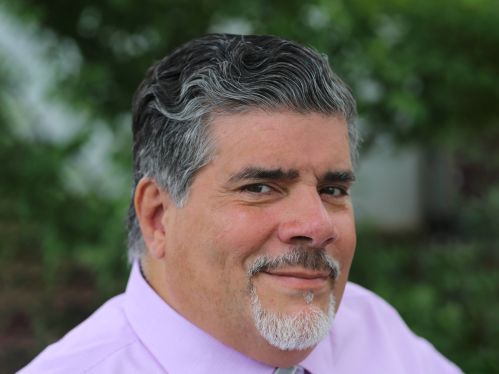
The Importance of AfroLatino/a Identity in the Diaspora
Omaris Zamora
Assistant Professor of AfroLatinx Studies
School of Arts and Sciences
Rutgers University-New Brunswick
As a second-generation Black Dominican born and raised in Chicago’s Puerto Rican Humboldt Park neighborhood, I understand that there are contexts in which my own dominicanidad is invisible or misread at best. My own experience as a Black Dominican woman in a Puerto Rican neighborhood has meant that my accent in Spanish, at times, was more Puerto Rican than Dominican. However, it also meant that because I was read as being “too Black” to be Puerto Rican or even Mexican, racism within the Latino community was always haunting me at every corner I turned. My experience is not unique and many AfroLatinos/as/xes experience this. The importance of AfroLatinx identity in the diaspora is often at the crossroads of invisibility and misrecognition that is rooted in anti-Blackness and white supremacy.
Moreover, AfroLatinx womanhood is hypervisible, yet in the same ways invisible and unrecognizable in spaces where Latinidad or Blackness must meet certain standards or check off certain requirements. When we dismiss or invisibilize the experiences of AfroLatinas, we render them into the realm of social and physical death (Orlando Patterson; Christina Sharpe)—meaning they do not exist, hence the gendered and anti-Black violence they have experienced never happened. To push this thought further we can ask: "How can we count demographic statistics in public policy, health, education, economics, gendered violence and anti-Blackness if we do not know how to account for AfroLatinx women?"
Often, we gather data about Black American women or Latinas, but AfroLatinx women are erased from the data, from the census and ultimately from transnational narratives around gender, migration and anti-Black dialogues. My scholarship is dedicated to recovering and re-integrating the importance of AfroLatinx narratives into an interdisciplinary field of study that challenges notions of Blackness, Latinidad, gender/sexuality and transnational migration. As AfroLatinidad becomes a concept that the broader public engages with, I urge us to not lose sight of the political, socio-economic realities that Black Latinos move, live and breathe within. AfroLatinx Studies is not just about definition, but situated knowledges; not just about history, but about world-making; not just about Black Latinx experiences, but the possibilities and portals that the contributions of AfroLatinos/as/xes open up and make possible. Doing and supporting AfroLatinx Studies and AfroLatinx scholars and communities, is a political commitment and we should always remember that.
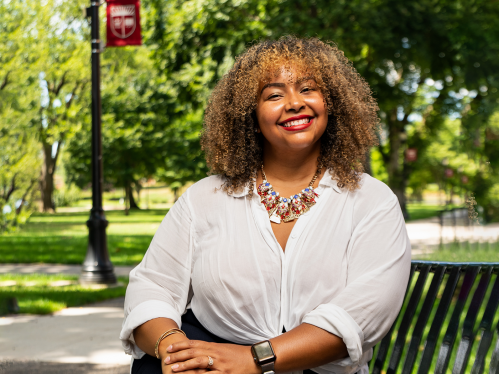
Hispanic and Latinx Business in America
Arturo Osorio
Associate Professor of Professional Practice
Rutgers Business School-Newark and New Brunswick
Rutgers University-Newark
The U.S. Census reported that 18.7 percent of the overall U.S. population was Hispanic as of April 1, 2020. In New Jersey, recent estimates suggest that about 20.4 percent (nearly 1.8 million) are Hispanic, which ranks the state seventh among the top 10 states with the largest Hispanic/Latino population in the nation. These statistics are not abstract concepts. They highlight the contributions and impact that Hispanics have on local economies.
As reported by the New Jersey Statewide Hispanic Chamber of Commerce (NJ-SHCC), the Garden State is home to over 120,000 Hispanic-owned businesses, which in turn create thousands of jobs and tens of billions of dollars in tax revenues – an essential component to funding municipal services and shoring up social programs like Medicare and Social Security. In 2018, the Gross Domestic Product of this Hispanic community in New Jersey was $97 billion - larger than the entire economic output of the state of Hawaii. In all, Hispanics in New Jersey represent about 14 percent of all small business owners and 20 percent of the local workforce.
Despite these numbers, Hispanics are still a financially underserved population. A recent Stanford University report found that only 20 percent of Latino-owned businesses that applied for national bank loans over $100,000 obtained funding, compared to 50 percent of their white-owned business peers. When looking at loans of all sizes, the percentages changed, but not the financial service gap: among Latinos, 51 percent received loans versus 77 percent for whites. Echoing these numbers, a 2020 research analysis by the U.S. Small Business Administration (SBA) Office of Advocacy found that businesses owned by Hispanics were more likely than those owned by whites to have their loan application denied outright. This reported data included all funding sources and was not solely focused on SBA initiatives. Considering business education in general, critical financial tasks such as invoicing, getting paid, paying bills, and managing taxes were reported to be a challenge for almost 74 percent of Hispanic-owned businesses. A recent analysis by QuickBooks (the bookkeeping software company), found that more than 21 percent of Hispanic business owners describe these regular business tasks as “extremely challenging.” Yet, despite all these challenges, Hispanics are more likely to own a business than the rest of the U.S. population.
This tenacity and growth are supported by a noticeable increase in education within the Hispanic community. Multiple programs targeting Hispanic business owners have emerged throughout the state. Programs like the Hispanic Entrepreneurship Training Program sponsored by PSE&G, the Latinas Entrepreneurship Series – both offered by NJ-SHCC – or the Black and Latino in Tech Initiative at Rutgers-Newark, or the outreach efforts with bilingual staff by New Jersey-Small Business Development Centers are some examples of these efforts.
Beyond business training, access to higher education has also played an important role in the Hispanic community’s positive impact. The number of Latinos enrolled in college has increased from 2.9 million to 3.6 million during the 2010 to 2019 period. This educational attainment among Hispanics has been led by women. In 2019, 56 percent of Hispanic college students were women, while only 44 percent were men.
The Hispanic community is an intrinsic part of the United States. Through their businesses, they provide local access to products and services enriching the local quality of life of towns all over. As individuals, Hispanics are qualified members of the community, driving innovation and supporting new ventures.
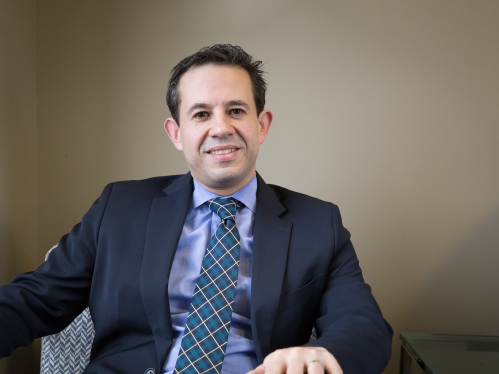
Reducing Health Inequities and Improving the Well-Being of Latinx Communities
Yonaira Rivera
Assistant Professor of Health Communication
School of Communication and Information
Rutgers University-New Brunswick
Hispanic Heritage Month is a time to celebrate the wonderful contributions of Latinx individuals and communities in the U.S. It is also a time to reflect on ways we can improve the well-being of these community members by reducing existing health inequities.
As is well documented in public health, social determinants are at the root cause of most health inequities. For Latinx audiences, these determinants are often multi-layered and may include lack of access to healthcare and health insurance, socio economic status, language barriers, acculturation levels, immigration status, cultural norms that perpetuate fatalistic views of disease, lack of infrastructure to support better health outcomes (such as accessible transportation or childcare) and racism and discrimination toward (and within) Latinx constituents. Further compounding these issues is a failure by some to acknowledge and respond to the ethnic and sociopolitical heterogeneity of Latinx audiences, which can lead to blanket interventions that are neither culturally sensitive nor socially acceptable.
Given the structural and sociopolitical barriers to achieving better health outcomes and quality of life, addressing health inequities within our communities requires culturally tailored approaches that empower Latinx audiences to take control of their health. This empowerment cannot only target individual members of the community, it also requires leveraging community partnerships that promote collective action. Efforts that center the perspectives of trusted community leaders and organizations are instrumental to addressing challenges that foster inequities within Latinx communities, as their expertise is central to delivering services that are responsive to local concerns. Listening to community leaders and assisting them in finding local solutions builds trust and fosters a sense of collective identity that is needed to implement long-term change.
Adequately addressing health inequities also requires the continued training of bilingual and bicultural healthcare professionals and scholars who can elevate the issues faced by Latinx communities by leading rigorous research and prioritizing community-led, evidence-based efforts. Investing in a diverse workforce that understands our communities will allow for the development of programs and research that impact the underlying causes of health inequities and promote a better quality of life for all.
Continuemos siendo agentes de cambio en nuestra comunidad amada.
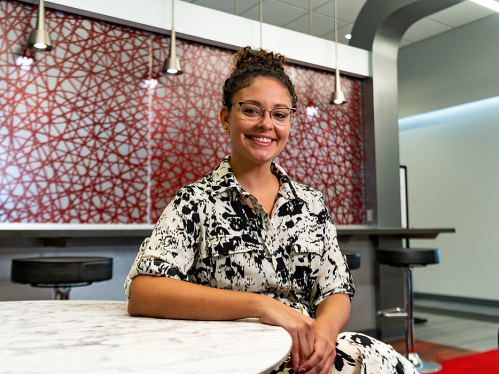




Produced by Evie Duvert. Photography by Marques Ruiz/Rutgers University.
